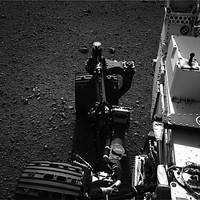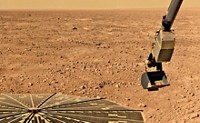Advertisement
Grab your lab coat. Let's get started
Welcome!
Welcome!
Create an account below to get 6 C&EN articles per month, receive newsletters and more - all free.
It seems this is your first time logging in online. Please enter the following information to continue.
As an ACS member you automatically get access to this site. All we need is few more details to create your reading experience.
Not you? Sign in with a different account.
Not you? Sign in with a different account.
ERROR 1
ERROR 1
ERROR 2
ERROR 2
ERROR 2
ERROR 2
ERROR 2
Password and Confirm password must match.
If you have an ACS member number, please enter it here so we can link this account to your membership. (optional)
ERROR 2
ACS values your privacy. By submitting your information, you are gaining access to C&EN and subscribing to our weekly newsletter. We use the information you provide to make your reading experience better, and we will never sell your data to third party members.
Physical Chemistry
Fallen Star
Genesis space capsule containing solar wind crashes to Earth
by Elizabeth K. Wilson
September 13, 2004
| A version of this story appeared in
Volume 82, Issue 36
View Video of Impact

View Video of Impact
In a bitter blow to space scientists and engineers, the Genesis spacecraft’s sample return capsule crashed in the Utah desert on Sept. 8. The capsule, which contained a collection of atoms from the solar wind, had broken open, team members reported at a press conference.
The capsule failed to deploy a series of parachutes that would have braked its fall to Earth and allowed a carefully orchestrated midair capture by helicopters.
A few hours after the crash, the team still did not know how much, if any, of the mission’s science would be recoverable. “It’s a difficult moment right now,” said a visibly emotional Donald Sweetnam, Genesis project manager at NASA’s Jet Propulsion Laboratory in Pasadena, Calif.
“We did pick up the capsule high in the atmosphere with our cameras and tracked it down,” Sweetnam said. “But as we exceeded the timeline for the [first] parachute to open, our hearts started racing faster, and before we knew it, it was on the ground.”
It’s estimated that the capsule hit the ground at about 193 mph. It landed, half buried in the dirt, about 31 miles from U.S. Army Dugway Proving Ground—well within the capsule’s original target impact zone.
A NASA team has collected capsule remnants and hustled them to a clean room at Dugway, where pieces of mud were picked out of the damaged sample canister. On Thursday, researchers will begin working to salvage pieces of the silicon wafers that contained the solar wind sample. A review board is being assembled to root out the cause of the crash.
The $260 million Genesis project is the first to return samples from beyond Earth since the last Apollo mission in 1972. Launched in 2001, Genesis spent several years trapping atoms and ions from the solar wind. The solar wind retains the composition of the original solar nebula, the primordial disk of dust and gas from which all the planets formed.




Join the conversation
Contact the reporter
Submit a Letter to the Editor for publication
Engage with us on Twitter